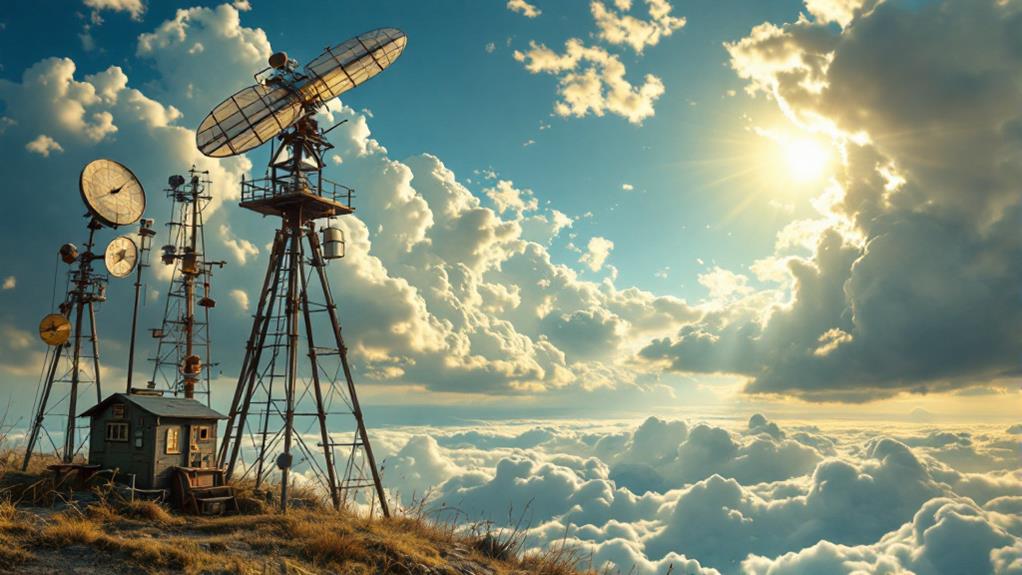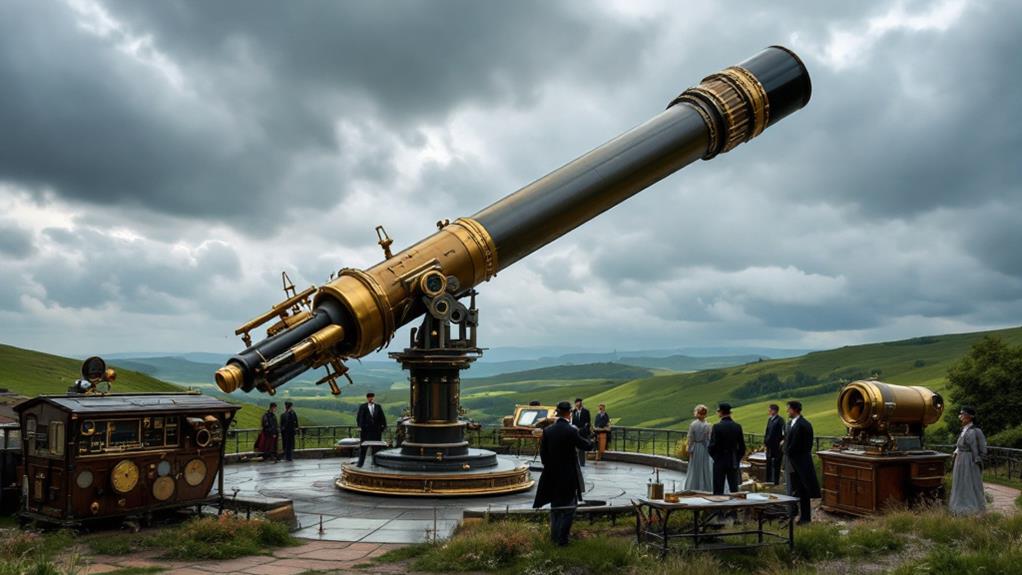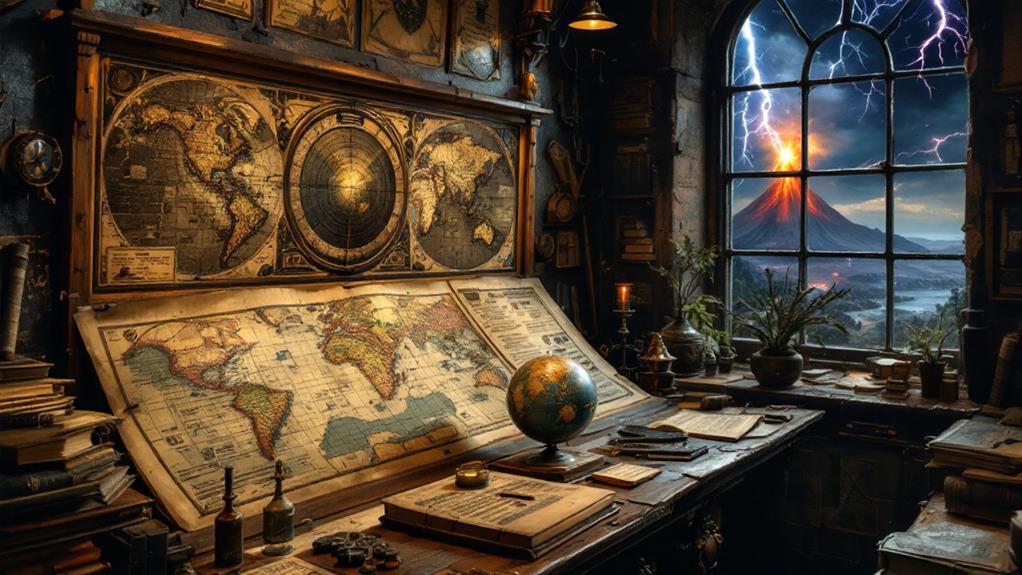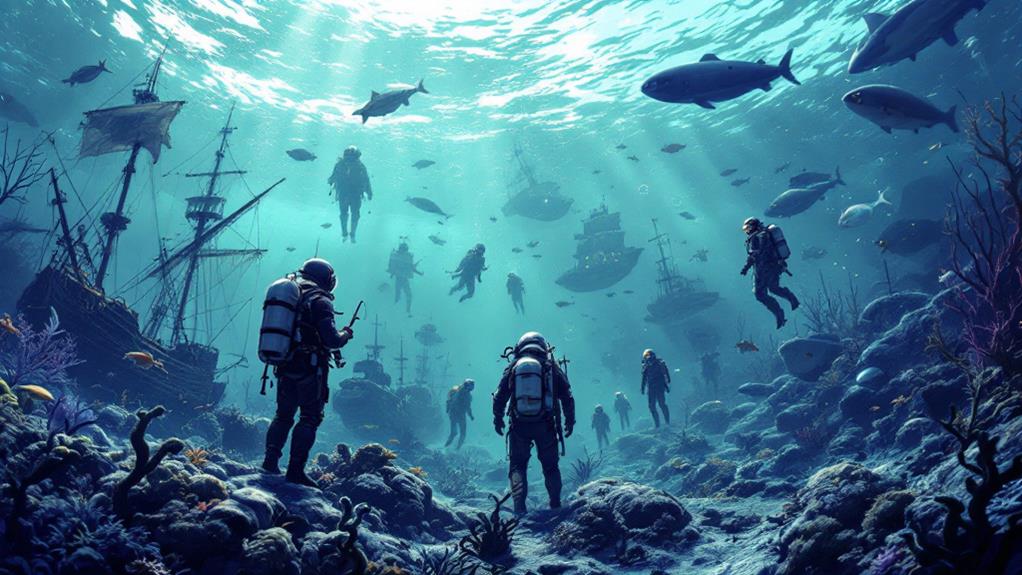The History of Meteorology: How We Predict the Weather

You're about to unveil how meteorology has transformed over centuries. Our ancestors relied on natural signs, like red skies and animal behaviors, to predict weather changes. The 17th century introduced tools such as barometers and thermometers, advancing accuracy. Observatories paved the way for strategic data collection and collaboration. The 20th century saw mathematical models and radiosondes revolutionize forecasting. Satellite technology brought a global view, refining predictions further. Today, modern forecasting blends advanced models with machine learning, making predictions more precise than ever. Learn how past innovations continue to shape the way we comprehend and predict the weather.
Ancient Weather Lore
Since time immemorial, people have turned to ancient weather lore to predict the whims of the skies. You might not realize it, but these folklore predictions have been deeply ingrained in cultures worldwide. Before the advent of modern science, communities relied on nature's subtle cues to anticipate seasonal changes and prepare for what lay ahead. For instance, you've probably heard the saying, "Red sky at night, sailor's delight; red sky in morning, sailor's warning." This timeless adage helped seafarers gauge incoming weather, using the sky's hue as a harbinger.
In the same vein, observing animals' behaviors has long been a staple of ancient weather lore. Perhaps you've noticed birds flying low before a storm or squirrels vigorously gathering nuts ahead of a harsh winter. These behaviors serve as nature's own barometers, offering you clues about impending weather shifts. Moreover, certain plants, like the morning glory, close their petals when rain is imminent, providing another layer of insight through these folklore predictions. By paying attention to these signs, you can tap into the wisdom that has guided humanity through countless seasonal changes, helping you make sense of the ever-changing skies.
The Birth of Instruments
While ancient weather lore provided valuable insights, the advent of scientific instruments marked a new period in weather prediction. These tools allowed you to quantify and measure atmospheric conditions with greater precision. The birth of instruments transformed meteorology, giving rise to more accurate forecasts.
- Barometric Pressure: The barometer, invented in the 17th century, became fundamental for measuring atmospheric pressure. Understanding barometric pressure changes allowed you to predict weather patterns, like incoming storms or clear skies.
- Hygrometer Design and Anemometer Evolution: Hygrometers, which measure humidity, evolved over time with different designs enhancing their accuracy. Anemometers, critical for gauging wind speed, also underwent significant evolution, providing insights into wind patterns essential for maritime navigation.
- Thermometric Advancements and Rain Gauge History: Thermometers improved vastly, offering precise temperature readings, important for daily forecasts. The rain gauge, with its roots in ancient times, developed into a standard tool for measuring precipitation, helping you understand rainfall distribution.
As these instruments improved, so did the accuracy of weather predictions. Altimeter accuracy also played a role in gauging elevation changes, crucial for aviation. These advancements laid the groundwork for modern meteorological practices, transforming how you perceive and predict weather.
The Age of Observatories

Embracing the technological advancements of their time, observatories emerged as essential institutions in the domain of meteorology. You'd find these observatories strategically positioned, often atop hills or isolated from urban interference, to optimize their observational capabilities. The observatory architecture itself was carefully designed to house diverse instruments, offering a clear line of sight for celestial and atmospheric phenomena. These structures became iconic symbols of scientific progress, playing a significant role in the advancement of weather prediction.
The historical significance of observatories can't be overstated. They served as the epicenters for data collection, recording weather patterns and atmospheric changes over extended periods. Through diligent observations, meteorologists began to identify trends, which formed the foundation for modern forecasting methods. You'd witness scientists employing observational techniques such as using telescopes and barometers, which allowed for accurate measurements of temperature, pressure, and humidity.
As data collection became more systematic, it facilitated the sharing of information across regions, fostering international collaboration. This period marked a transformative phase in meteorology, where the careful work conducted within observatories laid the groundwork for the sophisticated systems we rely on today. Observatories not only advanced meteorological science but also highlighted humanity's quest to understand and predict the natural world.
Meteorology in the 20th Century
Building on the foundational work conducted in observatories, the 20th century introduced groundbreaking changes in meteorology that reshaped weather prediction. You witnessed a shift from basic observations to more sophisticated techniques that provided a deeper understanding of climate patterns. This period marked a significant turning point in atmospheric science, laying the groundwork for modern forecasting methods.
During this time, three major advancements transformed meteorology:
- Numerical Weather Prediction (NWP): You saw the introduction of mathematical models to forecast weather. These models used data from the atmosphere to simulate future weather patterns, offering a more accurate and systematic approach to prediction.
- The Development of Radiosondes: These instruments, released into the atmosphere, gathered essential data on temperature, humidity, and pressure at different altitudes. This information was critical for understanding and predicting weather changes at various atmospheric layers.
- The Establishment of Weather Bureaus: National weather services, like the U.S. Weather Bureau, centralized weather data collection and dissemination, allowing for more coordinated and efficient forecasting efforts.
The Satellite Revolution

With the dawn of the space age, satellites have transformed meteorology by providing a global perspective on weather patterns. You can now understand weather systems on a planetary scale, thanks to satellite technology. Weather satellites orbit the Earth, offering global coverage that was unimaginable before. They capture images of cloud formations and storm systems, which image processing turns into valuable insights.
These satellites are equipped with remote sensing instruments that monitor atmospheric conditions without ever touching the Earth's surface. This capability allows for continuous atmospheric monitoring, enabling you to detect changes in temperature, humidity, and wind patterns. Data transmission plays a significant role here, as it sends real-time information back to Earth, allowing for timely weather forecasts.
Satellite technology doesn't just stop at daily weather predictions; it's also an essential tool in climate research. By observing long-term atmospheric trends, you can study climate change and its impacts on a global scale. This information is important for understanding how human activities affect the planet. The Satellite Revolution has truly reshaped how you comprehend and predict the weather, making meteorology more precise and far-reaching than ever before.
Modern Forecasting Techniques
Today, meteorologists employ a variety of modern forecasting techniques that harness advanced technology and sophisticated models. To predict the weather accurately, you need to understand how these techniques work together. Numerical models are at the heart of forecasting. These models use mathematical equations to simulate atmospheric conditions and provide detailed weather predictions. Data assimilation is essential, as it integrates real-time data into these models, improving their accuracy.
Key Techniques in Modern Forecasting:
- Predictive Analytics: This involves analyzing historical weather data to identify patterns and predict future conditions. By using predictive analytics, you can anticipate weather changes with greater precision.
- Ensemble Forecasting: Instead of relying on a single forecast model, ensemble forecasting runs multiple simulations to account for uncertainties. This approach gives you a range of possible outcomes, helping you understand potential weather scenarios.
- Machine Learning: This technology is transforming weather prediction by analyzing vast amounts of data to identify complex patterns. Machine learning algorithms improve forecast accuracy by learning from past weather events.
Through these techniques, modern meteorology isn't just about predicting the weather—it's about doing so with increasing accuracy and reliability, vital for climate modeling and planning.



